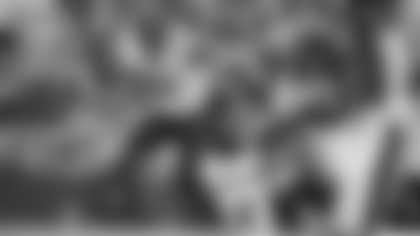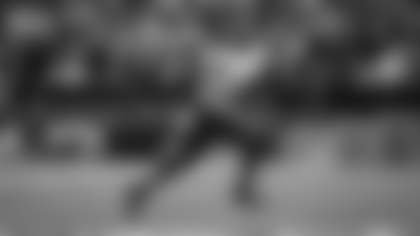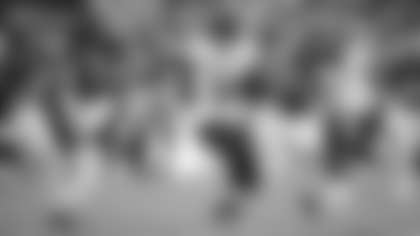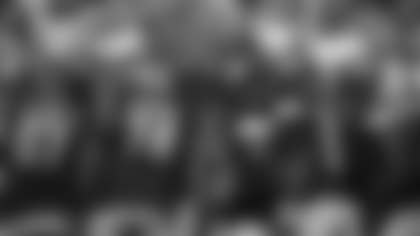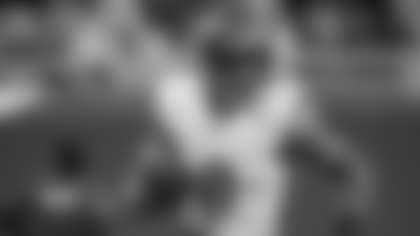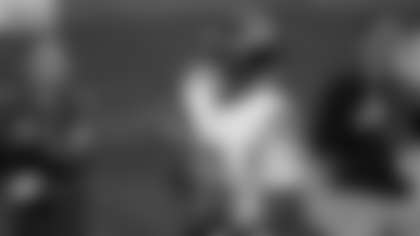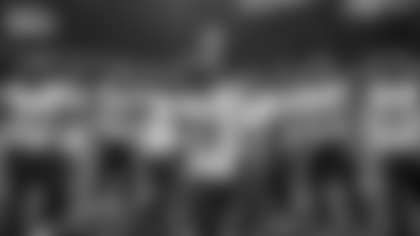The first question Ron McDole is often asked when mingling with long-time Redskins fans is how he earned the nickname "The Dancing Bear." In Washington, he'll forever be linked with that moniker.
Buffalo Bills enthusiasts remember him as a star end on dominant defenses that helped spark the Bills to championships in the old American Football League in 1964 and 1965, and a championship-game appearance in 1966. The Bills lost that year to a Kansas City team that advanced to play in Super Bowl I.
Before playing eight seasons for the Redskins starting in 1971, McDole was a three-time All-Pro in eight seasons in Buffalo and twice played in the league's all-star game. He was named to the all-time AFL second team.
He teamed with talented players such as Jack Kemp, a great quarterback long before he became a U.S. congressman, and guard Billy Shaw, now a member of the Hall of Fame. Marty Schottenheimer, one of the winningest coaches in NFL history and the Redskins' coach in 2000, was a Bills linebacker from 1965 to 1968.
"Oh yea, Jack and I were roommates when I first went there," said McDole, one of the original 70 Greatest Redskins. "We lived by each other. Great individual, fantastic ballplayer. That was a great time. In 64 and65, we had championship teams."
That those Bills teams were known so well for their defenses was a bit uncharacteristic for the AFL, which became reputed as a pass-oriented league after its debut in 1960. Quarterbacks such as Kemp, the Jets' Joe Namath, the Raiders' Daryle Lamonica and the Charger's John Hadl displayed an air-it-out style that defined the high-scoring league.
NFL teams generally relied on a more balanced approach, although the Redskins of the mid-1960s showcased an explosive, pass-happy offense with quarterback Sonny Jurgensen as the trigger-man.
"The old AFL didn't have the experience in the secondary, and they had to develop it, so it became more kind of a bomber-type of thing, long passes," McDole said. "But the fans liked it, and the league caught on. The biggest thing is the AFL got a contract with the TV networks. Eventually, the NFL had to do something about it, and that's how the merger came about."
The two leagues joined forces in 1970 under the umbrella of the National Football League. That was the last season in Buffalo for McDole. Bills coach John Rauch, who had been trying for some time to get rid of McDole, traded him to the Redskins on May 11, 1971.
George Allen, then in his first season as Redskins coach, had a keen eye for talented veterans and dealt three draft picks for the defensive end.
"Rauch okay'd the trade because he felt at the time that if they ever got another team built up that I'd be too old," McDole said. "Plus, he said George Allen drove him crazy by calling him every night.
In McDole, the defensive-oriented Allen found another weapon for his revamped defense. McDole joined a stream of other seasoned veterans who were dubbed the "Over The Hill Gang."
McDole helped anchor Allen's tough defenses of the 1970s, when the Redskins went to the playoffs five times, including an appearance in Super Bowl VII. He never missed a game in eight seasons in D.C., and started all but one of a possible 121, including playoffs. He was prolific for a defensive end at intercepting passes, and he blocked many field goals and extra points.
As a Redskin, McDole played at about 265 pounds, down from 300-plus during his days in the AFL.
So how did he become known as "The Dancing Bear"? Once when he was at a D.C. bar with Jurgensen and then-CBS sportscaster Tom Brookshier, he was twisting and turning his rotund body on the dance floor. Jurgensen proceeded to coin the nickname.
"That has stayed with me for many years," McDole said. "Everybody thought it was because of the way I looked and played on the field. It was quite a dance."
_________________
Mike Richman is the author of The Redskins Encyclopedia and the Washington Redskins Football Vault. He also hosts a TV show called "Burgundy & Gold Magazine." His web site is www.redskinshistorian.com and his email is mikerichman@redskinshistorian.com.
.
.
.*
*



